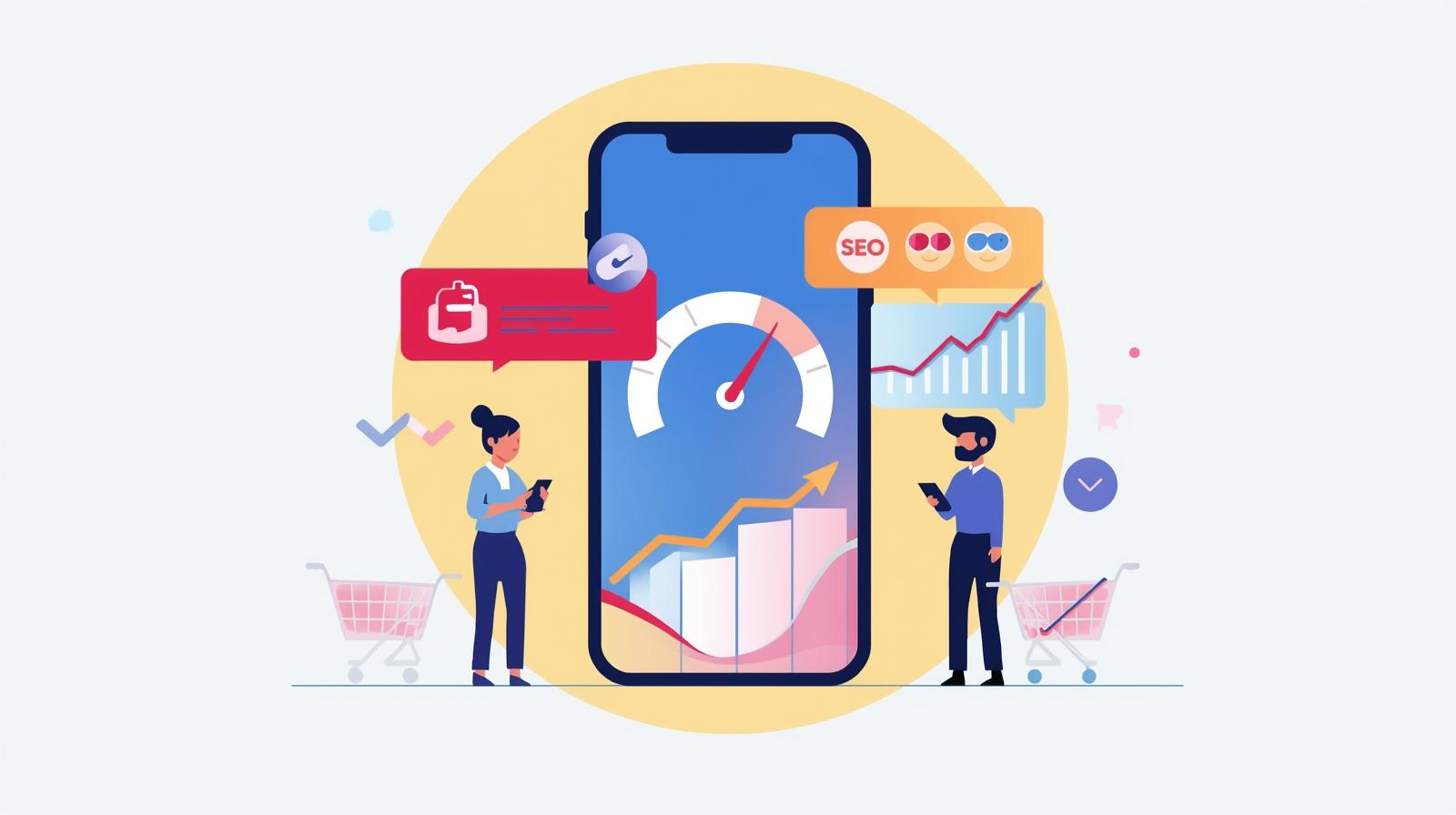When visitors land on a site, they expect it to load within seconds. If it doesn’t, frustration sets in, and many users leave before engaging with the content. This is where website speed becomes a deciding factor—it can either secure a conversion or cause a missed opportunity. Studies show that even a slight delay in page loading can significantly reduce customer satisfaction and sales.
Website speed is not just about user experience; it directly impacts both revenue and SEO. A fast-loading site encourages users to stay longer, explore more pages, and make purchases, while search engines reward high-performing websites with better rankings. Conversely, a slow website risks driving customers away and lowering visibility on Google.
In this guide, we’ll explore how website speed influences business performance, its role in SEO, and how improving it can accelerate revenue growth.
Why Website Speed Matters for SEO and User Experience
Search engines and users both value efficiency. A slow website creates friction, while a fast-loading one delivers a seamless experience.
This is why website speed and SEO are closely connected. Google uses site performance as a ranking factor, meaning that slow-loading websites risk losing visibility in search results. Transitioning to a faster, optimized site improves not only your rankings but also your ability to retain visitors.
From a user’s perspective, speed directly influences engagement. If pages take too long to load, bounce rates increase, and dwell time decreases—signals that search engines interpret as poor user experience.
On the other hand, a site that loads quickly encourages visitors to explore more content and complete desired actions, such as filling out a form or making a purchase. In short, better site performance metrics lead to improved trust, loyalty, and conversions.
The Role of Core Web Vitals in SEO
Google evaluates website speed using Core Web Vitals, a set of measurable performance factors. These include Largest Contentful Paint (LCP), which measures loading speed; First Input Delay (FID), which gauges responsiveness; and Cumulative Layout Shift (CLS), which reflects visual stability.
When a website performs well across these metrics, it signals to Google that the site offers a reliable experience, improving its chances of ranking higher.

The Connection Between Website Speed and Revenue
Website performance isn’t just about rankings—it directly affects profitability. Studies consistently show that website speed and revenue go hand in hand.
A slow-loading site frustrates visitors, leading them to abandon the journey before converting. Even a one-second delay can decrease conversion rates by as much as 7%, proving how costly poor performance can be for businesses.
Beyond lost sales, slow pages impact customer trust and loyalty. Users associate site efficiency with professionalism, and when they experience delays, they are less likely to return.
On the other hand, businesses that invest in conversion rate optimization through faster load times often see immediate improvements in customer retention online, repeat purchases, and overall revenue growth.
How Page Speed Influences Conversion Rates
Speed plays a critical role in every stage of the customer journey. Slow checkout pages increase cart abandonment, hesitation during form completions, and missed opportunities in lead generation. A fast site, however, reduces friction, encouraging visitors to move seamlessly from browsing to buying.
Case Studies on Speed and Revenue
Major brands have demonstrated the financial impact of speed. For example, Amazon found that every 100 milliseconds of delay cost them 1% in sales, while Walmart reported a 2% revenue increase for every second of faster load time. These real-world examples highlight that speed is not just a technical issue but a business-critical factor.
The Impact of Mobile Website Speed on SEO and Conversions
Mobile browsing now dominates online activity, which makes mobile website speed a critical factor in both search visibility and business performance.
Since Google introduced mobile-first indexing, the speed and usability of mobile pages directly influence rankings. A site that loads quickly on desktop but lags on mobile risks losing both search engine placement and valuable traffic.
From a user perspective, slow mobile page speed often leads to high bounce rates and abandoned sessions. Shoppers browsing on-the-go expect near-instant access to information, and delays can quickly drive them to competitors.
In fact, studies show that even small improvements in load time can significantly increase conversions on mobile devices.
For businesses, optimizing technical SEO with mobile performance in mind—compressing images, reducing server response times, and leveraging caching—creates a smoother experience that encourages repeat visits and higher conversion rates.

Ideal Website Speed Benchmarks for SEO and Business Growth
In digital marketing, the ideal website loading time is under 2–3 seconds. Research consistently shows that visitors begin to lose patience after just a few seconds, and every additional delay increases the likelihood of abandonment. For search engines, this threshold also serves as a signal of strong site performance and reliability.
From an SEO perspective, sites that meet these site performance metrics are more likely to earn higher rankings, since Google rewards fast-loading pages that align with Core Web Vitals.
Beyond search visibility, speed directly influences user satisfaction, keeping visitors engaged and encouraging them to explore more pages.
Industry best practices for technical SEO include compressing images, enabling browser caching, reducing code bloat, and using a reliable hosting service. Together, these strategies help maintain consistent load times across devices and networks.
How to Improve Website Speed for SEO and Revenue Growth
Improving website speed is one of the most effective ways to enhance both search visibility and revenue potential. A faster site not only creates a positive user experience but also aligns with search engine requirements for site performance metrics.
By following proven optimization practices, businesses can keep visitors engaged, reduce bounce rates, and maximize conversions.
First, optimize images by compressing them without losing quality. Large, uncompressed images are among the most common reasons for slow websites.
Next, enable browser caching so that frequent visitors do not need to reload the entire site each time. This small adjustment can dramatically reduce load times.
In addition, use a Content Delivery Network (CDN) to distribute your site’s files across global servers. A CDN ensures faster delivery regardless of where users are located.
Furthermore, minimize unnecessary code such as bulky CSS and JavaScript. Clean, efficient code improves both site performance and crawlability.
Equally important, choose a reliable hosting provider with strong speed infrastructure. Even the best on-page optimizations cannot offset the drawbacks of poor hosting.
Finally, conduct regular performance audits to identify issues before they impact rankings and revenue. Ongoing monitoring keeps your website fast, secure, and competitive.

Tools to Measure and Improve Website Speed
Businesses can rely on analytics tools to track and improve website performance. Google PageSpeed Insights offers detailed suggestions based on Core Web Vitals.
GTMetrix provides reports that highlight bottlenecks in load times, while Lighthouse evaluates technical SEO factors alongside speed. Regularly using these tools ensures continuous improvement and helps maintain strong results in both SEO and revenue growth.
Key Factors and Common Mistakes That Affect Website Speed
Website speed is shaped by several technical elements, and overlooking them often leads to performance issues. Understanding both the factors that drive speed and the mistakes that slow it down is essential for strong SEO, user satisfaction, and conversions.
Hosting and Server Performance
-
Factor: A reliable hosting provider ensures faster response times and better uptime.
-
Mistake to Avoid: Using low-quality or overcrowded servers that delay content delivery.
Media Files
-
Factor: Optimized images, videos, and graphics (compressed, resized, or converted to modern formats like WebP) load quickly without hurting quality.
-
Mistake to Avoid: Uploading oversized or uncompressed files, which often account for most slowdowns.
Code and Scripts
-
Factor: Clean, lightweight CSS, JavaScript, and HTML improve rendering efficiency.
-
Mistake to Avoid: Running too many plugins or third-party scripts (like trackers and widgets) that bloat the code and increase load time.
Caching and Content Delivery Networks (CDNs)
-
Factor: Browser caching and CDNs store and distribute content closer to users, reducing latency.
-
Mistake to Avoid: Not enabling caching or skipping a CDN, especially for websites with global traffic.
Mobile Optimization
-
Factor: Fast, mobile-friendly websites keep bounce rates low and support Google’s mobile-first indexing.
-
Mistake to Avoid: Ignoring mobile optimization, which hurts rankings and revenue opportunities.
Conclusion: Website Speed as a Growth Driver
Website speed is more than a technical detail—it’s a critical driver of SEO rankings, user experience, and revenue growth.
A fast-loading site reduces bounce rates, improves engagement, and boosts conversions, making it a cornerstone of modern digital marketing success.
Regular audits and optimizations ensure your website stays competitive, meeting both search engine requirements and customer expectations.
From compressing images to improving hosting, every improvement contributes to stronger performance and measurable business results.
If your site isn’t performing at its best, consider partnering with a professional we development or SEO agency. Expert performance audits and tailored optimization strategies can help you unlock the full potential of your website speed and achieve sustainable growth.
Explore our custom web design services with Alphanetx’s experienced team.


